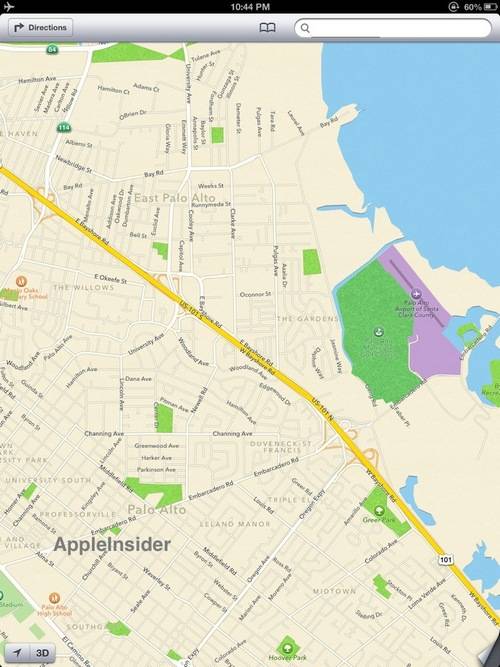You are probably aware that with iOS 6, Apple has decided to give Google Maps the order of the boot in favour of their very own fruity flavour Maps service, basically cutting using Google map servers with Apple controlled mapping servers, and to expand and improve on mapping features.
According to an article over on Apple Insider, Apple Maps will be introduced with iOS 6 for the iPhone and Apple iPad, and the first tech advancement with iOS 6 maps relates to the use of ‘resolution independent vector images’, which enables smooth zooming with labels and details popping up when space allows.
Basically using Google Maps when zooming in the existing map it turns blurred and is incrementally repainted with the next zoom level as it downloads, with each fixed zoom level made up of bit-mapped graphics, which means labels are in a fixed orientation and position so that when you rotate the labels are upside down, whilst zooming in on labels can also be left somewhat illegible.
However, when using vector maps, all roads, labels, coastlines and such are represented as ‘mathematical lines’ instead of fixed images, which enables Apple to allow the user to freely rotate a map however they wish whilst the labels dynamically reorientate to stay legible.
Furthermore, with vector maps the user can continue to zoom even when in Airplane Mode, although apparently iOS 6 maps still complains when there isn’t a data connection, but it will let you zoom in and out of previously visited areas, as it continues to load lean vector map data it has loaded.
Apparently Apple didn’t wish to simply clone Google Maps, but rather deliver a replacement with superior tech, and be using vector graphics rather than static bit maps they found they could enhance navigation experience to take fuller advantage of the graphic capabilities of Apple’s newest mobile gear.
However, Google isn’t one to stay behind in the maps game and word has it they are also working on their next generation Google Maps that will also use vectors but is more difficult to achieve due to targeting several platforms such as the web, and Android, whilst Apple only has one platform iOS Cocoa Touch.
Word is once Apple ships Apple Maps in iOS 6 later in the fall, the company will essentially grab half of Google’s mobile map users along with virtually all iOS users.
